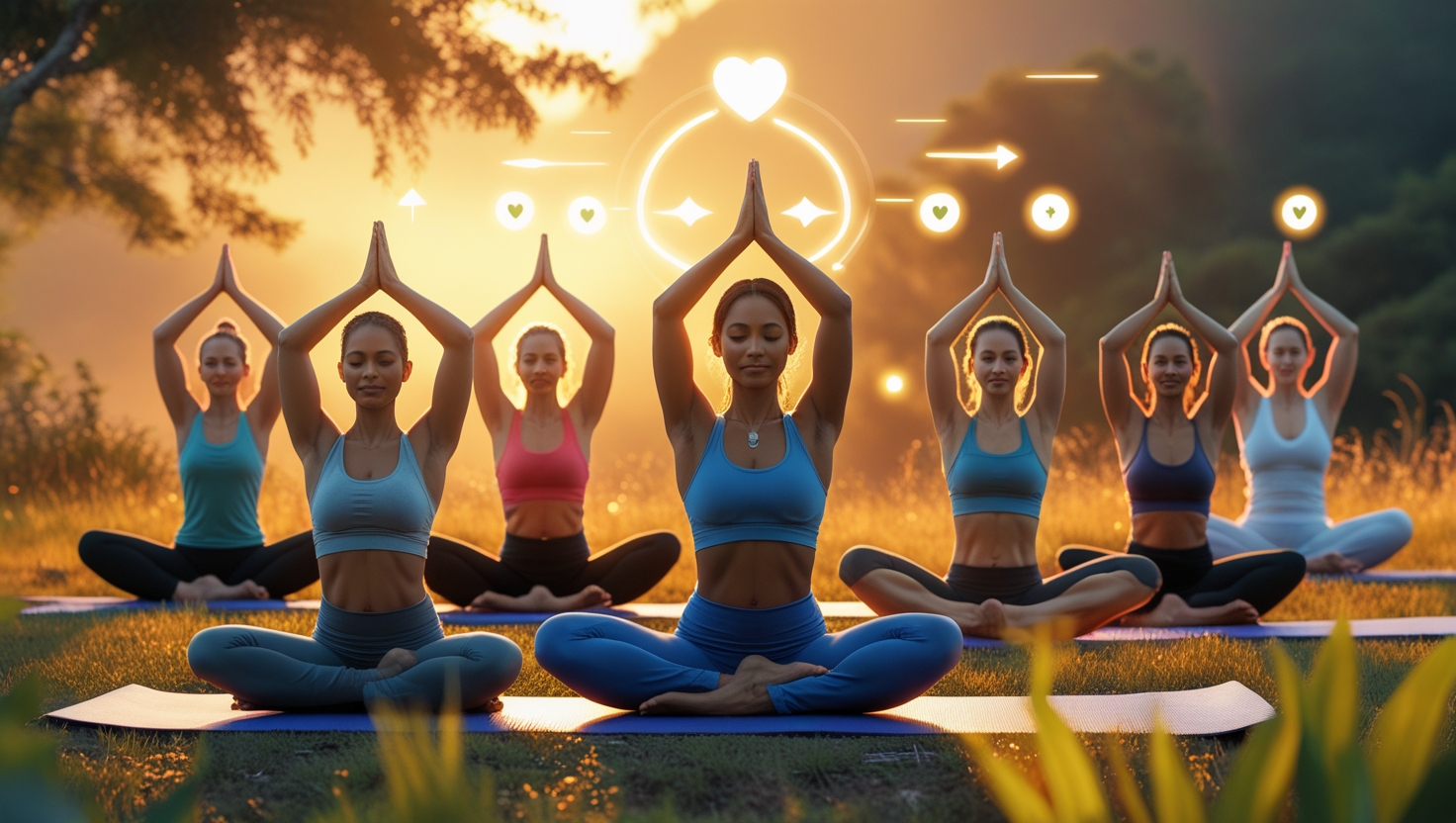Yoga is a practice that has been around for thousands of years. It offers numerous benefits, from improving flexibility and strength to reducing stress and enhancing mental clarity. Many people wonder what happens before and after yoga sessions and how the practice can truly transform both the mind and the body. In this article, we will explore the changes that occur before and after yoga, the benefits of starting a yoga practice, and how to get the most out of your sessions.
The Importance of Preparing Before Yoga
Before you begin any yoga session, it is essential to prepare both physically and mentally. Preparing your body for yoga ensures that you can safely perform the poses and get the most out of each movement.
One of the first things to consider before yoga is to wear comfortable clothing that allows for easy movement. Tight or restrictive clothing can limit your ability to perform certain poses, leading to discomfort or even injury. Choosing breathable fabrics will also help keep you cool and comfortable during your practice.
Hydration is another crucial aspect of preparation. Yoga can be a physically demanding activity, and staying hydrated ensures that your body has the energy it needs to perform each pose effectively. Drink water before starting, but avoid over-hydrating as it can cause discomfort during certain positions.
Mentally preparing for yoga is just as important as physically preparing. Take a few minutes to focus on your breath and clear your mind of any distractions. This will help you get into the right mindset for yoga and allow you to be present during your practice. Yoga is not just about physical movement but also about connecting the mind, body, and spirit.

The Immediate Effects During Yoga
As you begin your yoga practice, you may notice several immediate effects on your body and mind. One of the first things people often experience is a sense of calmness. The deep breathing and mindfulness techniques used in yoga help activate the parasympathetic nervous system, which is responsible for relaxation. This leads to reduced stress and anxiety, making you feel more centered.
Your body will also start to feel the benefits of movement. Yoga helps improve flexibility, and you may notice that your body feels looser and more relaxed as you move through different poses. Stretching muscles that are tight from daily activities can lead to increased circulation and improved posture.
Additionally, yoga helps build strength, particularly in the core and lower body. Even though yoga may not seem like an intense workout, many poses engage muscles that help improve overall strength and endurance. This can be especially beneficial for those looking to improve their balance and flexibility.
The Benefits of Yoga After Your Session
After finishing a yoga session, you may notice a variety of positive effects on both your mind and body. Physically, yoga helps to lengthen and stretch muscles that may have been tight before. This leads to improved flexibility over time. The calming nature of yoga also helps relax your muscles and joints, reducing soreness and stiffness.
One of the most noticeable benefits after yoga is the reduction of stress and anxiety. Yoga triggers the release of endorphins, which are chemicals in the brain that promote feelings of happiness and relaxation. These endorphins can provide a sense of well-being and emotional balance long after the session has ended.
You might also experience improved posture after yoga. Many poses focus on alignment and strengthening the muscles that support the spine. This leads to better posture and reduces the chances of experiencing back pain or discomfort.
Your mental clarity may also improve. Many people report feeling more focused and at peace after a yoga session. This mental clarity can carry over into other areas of your life, making you feel more productive and centered throughout the day.
The Long-Term Benefits of Regular Yoga Practice
The more consistently you practice yoga, the more you will notice long-term benefits. Over time, regular yoga practice can help transform both your body and your mind in significant ways. Physically, yoga helps improve balance and stability, especially as you get older. Many yoga poses target the core muscles, helping you develop better overall strength and coordination.
Mentally, yoga fosters mindfulness and emotional resilience. The practice of focusing on your breath and staying present during your sessions teaches you to quiet your mind and focus on the here and now. This mindfulness can help you better handle stress and anxiety in daily life, improving your overall mental health.
Yoga also promotes better sleep. The relaxation techniques learned in yoga can help ease tension and calm the mind, making it easier to fall asleep and stay asleep throughout the night. If you struggle with insomnia or other sleep-related issues, yoga can be a natural remedy.
How to Get the Most Out of Your Before and After Yoga Routine
To maximize the benefits of yoga, it’s important to establish a routine that includes both preparation before and recovery after your practice. Before yoga, focus on stretching and warming up your body to reduce the risk of injury. Perform some light stretches or a few sun salutations to prepare your muscles for deeper stretches.
After yoga, take time to cool down and allow your body to relax fully. Many yoga classes include a savasana or relaxation period at the end, which helps integrate the benefits of the practice into your body. Use this time to focus on your breath and clear your mind. After your session, drink plenty of water to help flush out toxins and keep your body hydrated.
Incorporating meditation into your routine, both before and after yoga, can help deepen your practice. Meditation enhances mindfulness, helping you become more aware of your body and thoughts. This increased awareness allows you to connect more deeply with yourself and your practice.
The Role of Breathing in Before and After Yoga
Breathing plays a crucial role in both the before and after aspects of your yoga practice. It is often said that yoga is about the connection between breath and movement, and this connection helps to bring balance to the body and mind. Before you begin your yoga practice, focusing on your breath helps calm your nerves and prepares your body for the physical activity ahead.
Starting with deep, slow breaths can help you center yourself and shift your focus away from distractions. It allows you to enter a relaxed state, making it easier to transition into the yoga poses. Deep breathing also increases oxygen flow to your muscles, preparing them for the stretches and movements you will be doing.
After the session, breathing remains just as important. Deep breathing during your cool-down phase helps your body relax and release any remaining tension. It aids in lowering your heart rate and signals to your body that it’s time to shift from the physical demands of the practice to a more restful state. By focusing on your breath post-practice, you help your body and mind transition into a state of calm and relaxation, which can enhance the benefits you receive from the session.
Before and After Yoga for Mental Clarity
While yoga is known for its physical benefits, its impact on mental clarity is just as significant. Before yoga, many people experience a cluttered or distracted mind due to stress, busy schedules, or various external factors. Taking a few minutes to center yourself with deep breathing or mindfulness exercises before starting your yoga practice helps clear your mind, allowing you to focus better during your session.
As you move through your yoga practice, the focus on breathing and mindful movement helps quiet mental chatter. By concentrating on each pose and the sensation in your body, you allow yourself to be fully present in the moment. This act of focusing on the present moment can lead to greater mental clarity and emotional balance.
After yoga, many people report feeling more clear-headed and focused. The relaxation and mindfulness cultivated during the practice extend beyond the mat, helping you make clearer decisions and approach daily challenges with a calmer mindset. Yoga allows you to let go of mental clutter and gives you the space to feel more centered and grounded in your thoughts.

Yoga and Its Impact on Overall Health
The before and after effects of yoga extend far beyond just flexibility and stress relief. Regular yoga practice can have a profound impact on overall health and well-being. Yoga promotes cardiovascular health by improving blood circulation, which enhances the function of the heart and lungs. Many yoga poses, especially those involving the core and lower body, help improve circulation, ensuring that oxygen and nutrients are effectively delivered to the body’s cells.
Furthermore, yoga supports digestive health. Certain poses stimulate the digestive system, helping with the natural movement of food through the intestines. This can lead to improved digestion and help prevent common issues such as bloating or constipation.
Yoga also helps boost immunity. By reducing stress, which weakens the immune system, and improving circulation, which promotes the removal of toxins, yoga helps strengthen the body’s defense mechanisms. This makes it easier for your body to fight off infections and illnesses.
The Psychological Effects Before and After Yoga
Yoga offers numerous psychological benefits, both before and after your practice. Before starting yoga, many people feel anxious, stressed, or mentally fatigued. Yoga provides a moment of escape, a chance to disconnect from the stresses of daily life. The mental preparation before yoga, through breathing exercises or meditation, creates a peaceful mindset that helps set the tone for the session ahead.
The psychological effects of yoga are especially evident after the session. As you transition from the physical poses to relaxation, you may feel a deep sense of calm and mental clarity. This sense of peace extends well beyond the mat, improving emotional well-being and promoting a more positive outlook on life.
Regular yoga practice can help reduce symptoms of anxiety and depression by promoting the release of neurotransmitters like serotonin, which is known as the “feel-good” hormone. The physical movements in yoga also help release endorphins, the body’s natural pain relievers, which contribute to an overall sense of happiness and well-being.
Conclusion
Yoga is a transformative practice that offers a range of benefits before, during, and after your sessions. By preparing your body and mind before yoga, you set the stage for a successful practice that promotes physical flexibility, mental clarity, and emotional balance. The immediate effects during yoga, such as improved strength and reduced stress, contribute to a feeling of well-being and inner peace. After your yoga session, the benefits extend into your daily life, enhancing your mood, posture, and overall health.
Yoga is not just a physical workout but a holistic practice that nurtures both your mind and body. Incorporating yoga into your daily routine can lead to long-term benefits, from improved flexibility to better mental health, helping you lead a more balanced and fulfilling life.
FAQs
1. What should I do before my yoga practice?
- Before yoga, it’s important to prepare your body by wearing comfortable clothing and staying hydrated. Spend a few minutes focusing on your breath to mentally prepare for the practice.
2. How can yoga reduce stress?
Yoga reduces stress by activating the parasympathetic nervous system, which promotes relaxation. Deep breathing and mindfulness during yoga help calm the mind and reduce anxiety.
3. How often should I practice yoga to see results?
For noticeable results, aim to practice yoga at least three to four times a week. Consistency is key to improving flexibility, strength, and mental clarity over time.
















